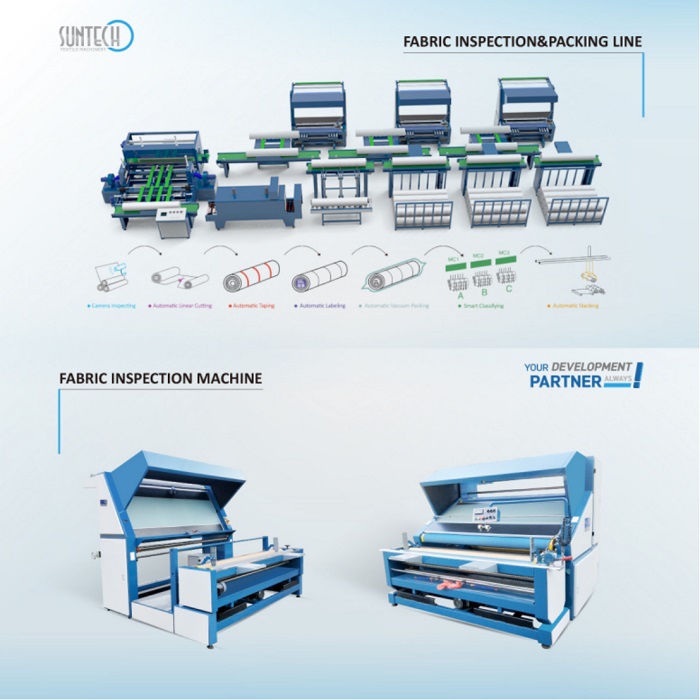China is a major textile country, and the textile industry is one of the pillar industries of China's national economy. In the past 20 years, the textile industry corporate prosperity index has shown volatile changes, which reached its peak in 2003, 2007, 2011, 2013 and 2017, and reached its peak in 2002, 2004, 2009, 2012 and 2016. Phased valleys. In 2013 and 2014, the overall prosperity index of the textile industry remained within the growth range, but the growth trend has slowed down compared with the previous year. In recent years, the prosperity index of the textile industry has basically remained the same as the previous year, as shown in the figure below:
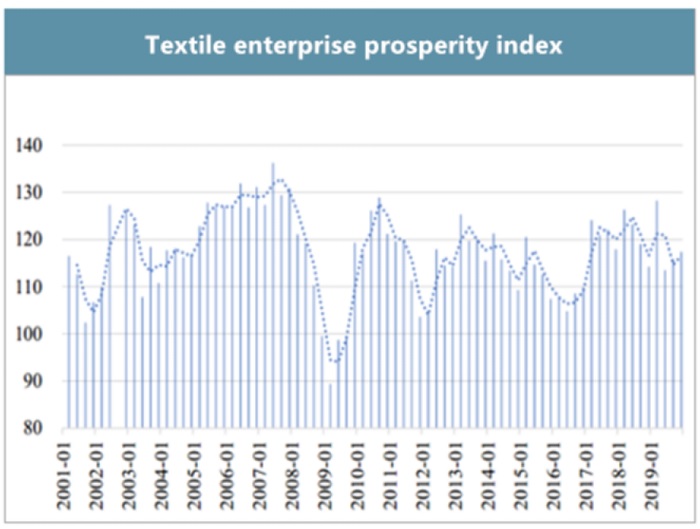
In 2018, China's textile enterprises above designated size achieved a total of 5,370.350 billion yuan in their main business scale, a year-on-year increase of 2.90%. In 2019, the investment growth momentum of textile enterprises was weak, the efficiency level was declining, and the main economic operation indicators showed a slowdown. The textile and apparel enterprises above designated size achieved operating income of 4.943645 billion yuan, a decrease of 1.47% compared with the same period of the previous year. In 2020, due to the impact of the covid-19, the textile industry was relatively depressed in the first half of the year, and orders surged in the second half of the year, almost making up for the losses in the first half of the year. Generally speaking, the textile industry is still booming.(Click to share to LinkedIn)
In the past 10 years, among the industries above designated size, the added value of the textile industry has continued to grow, and the growth rate has slowed down in recent years. The details are as follows:
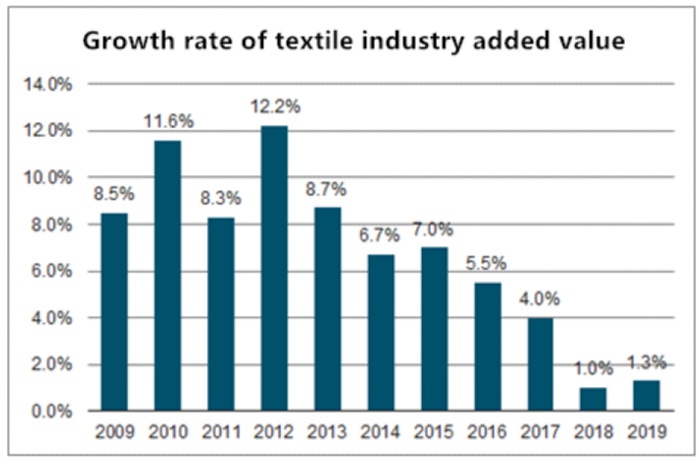
Among the industries above designated size in 2017, the textile industry grew by 4.0%. In 2018, the national retail sales of clothing, footwear, hats, and knitting textiles above designated size increased by 8% year-on-year, and the growth rate was 0.20% higher than the previous year. The growth rate of retail sales was 2.30%. In 2019, the growth rate of China's domestic textile and apparel market has slowed down. The national retail sales of clothing, footwear, hats, and knitting textiles above designated size increased by 2.90% year-on-year, and the growth rate slowed down by 5.10% from 2018.(Click to share to Facebook)
Generally speaking, the textile industry is more susceptible to unfavorable factors such as fluctuations in international economic growth, rising raw material and labor costs, exchange rate fluctuations, and intensified industry competition. Although the growth rate has declined, the overall textile industry has maintained a steady growth trend.
In the past 10 years, China's textile yarn, fabric and product exports have shown an upward trend year by year. Details are as follows:

In summary, although the growth rate of the textile industry has slowed down significantly, the overall market is still huge, with exports increasing year by year, with huge potential.
At present, in addition to the external environment, the factors hindering the growth of the textile industry also include its own industrial structure, production technology and technical issues. In order to meet the development needs of the textile industry, production efficiency and fabric qualification rate should be improved, and textile machinery is developing in the direction of intelligence.
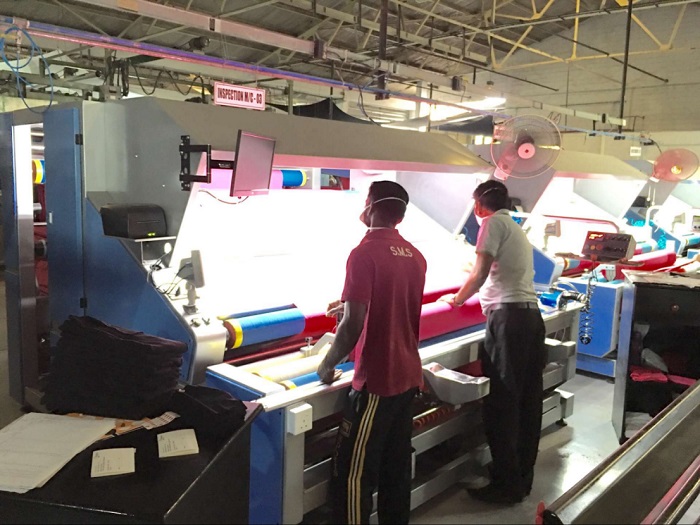
In the textile production process, the key link to improve production efficiency and fabric qualification rate is fabric inspection. In recent years, fabric inspection machines have been continuously technologically innovated. In order to increase the speed of fabric inspection, automatic fabric inspection technology has emerged. Due to the difficulty of automatic fabric inspection, the immature operation, and the high price, it has not been widely used.
Many companies, including Suntech, are studying automatic fabric inspection technology and believe that it will replace traditional manual fabric inspection in the future. But now, most fabric inspections still adopt the mode of fabric inspection machine + manual fabric inspection.
So, in the process of fabric inspection, how to improve the speed and accuracy of fabric inspection? In addition to using intelligent equipment, inspectors should also be familiar with defects and master fabric inspection standards.
What are the defects of fabric inspection?
How to deal with it?
Fabric defects are very complex, including spinning defects, weaving defects, printing and dyeing defects and so on.(try Suntech fabric inspection machine)
Fabric defects formed by spinning include unevenness, thick warp, wrong weft, double yarn, de-weft, weak twist, strong twist, foreign fiber, yellow and white yarn, colored warp, colored weft, oily yarn, coal ash yarn, knot Veil, skirt wrinkles, etc. Since the winder has generally adopted a new type of electronic yarn clearer, it can remove most of the yarn defects, such as long thick knots, short thick knots, details, double yarns, knots, foreign yarns, colored yarns, etc. The total removal efficiency can only Reach 70%-80%, there are still defects being missed. If the long section of the thick warp is missed, it will cause continuous defective fabrics, even dozens of defective fabrics, so The inspection process must be stricter.
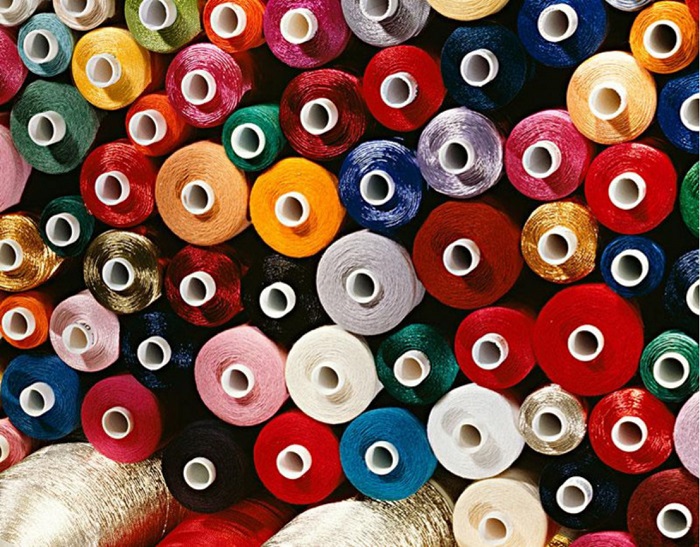
Defects formed by weaving are obviously the focus of fabric inspection, mainly including rungs, thin and dense roads, double yarns, wefts, wefts, jumps (jumps, jumps, star jumps), warp shrinkage, weft shrinkage, hundred feet (Refers to twill), poor edges, side bracing, broken warp, holes, weaving of foreign matter, oil stains, dragging yarn, foreign fibers, cotton balls, cloth blooming, slub yarn, etc. 7 defects such as dragging yarn, cotton balls, cloth blooming, weft shrinkage, burrs, sporadic slubs, and weaving of foreign objects are often listed as small defects, which can be removed during manual inspection. The main defects should be marked and then repaired or opened cut.
Weaving defects should focus on the control of defects such as rungs, thin and dense roads, double yarns, jumps, broken warps, and broken holes. Once the above-mentioned defects appear, they should be classified and recorded separately, and scored and assessed. If they occur continuously or repeatedly, they must be shut down in time.
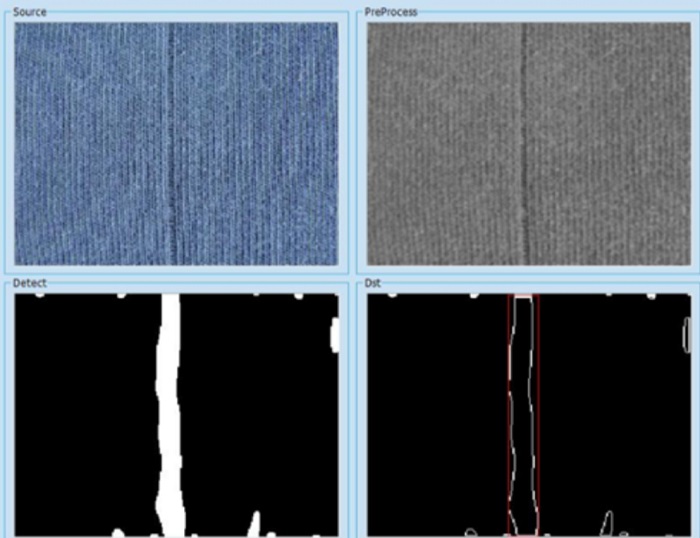
Grading
The scoring of fabric appearance defects is generally based on the length of the warp or weft defects. If there are warp and weft problems at a point at the same time, such as holes, it is generally considered a big defect.
Basic test items for fabrics: color difference (cylinder difference, match difference, side center, head and end), weight, width and weft, handle, organization, color, appearance, size, odor, shrinkage (shrinkage, shrinkage) , Washing color fastness and rubbing color fastness.
Scoring criteria for fabric defects
Fabric inspectors should be familiar with the scoring standards for fabric defects at home and abroad in order to accurately determine the defects and fabric scoring.
At present, the commonly used standard for fabric defects is the American "FOUR POINT SYSIEM" scoring method. The scoring method is as follows:
1. The defect is 3 inches or less (7.5 cm in centimeters)-give one point;
2. The defect exceeds 3 inches and reaches 6 inches (7.5-15 cm)-two points;
3. Defects exceeding 6 inches to 9 inches (15-23 cm)-three points;
4. Defects exceeding 9 inches (23 cm or more)-4 points.
Of course, there is a little error between centimeters and inches. In fact, there is a certain degree of flexibility when using the quarter-point system to inspect cloth. It is not rigid that 7.4 cm must be one point, and 7.6 cm must be 2 points, depending on the type of defect and the customer Depending on the requirements.
Whether using the American standard four-point system or the European standard to inspect fabrics, it is people-oriented. In fact, it is the customer's standard. The American standard four-point system or the European standard is only a reference basis. Strictly speaking, the American standard four-point system is only an inspection basis , Is not strictly a standard. As for the American standard four-point system, what standard or how many points should it achieve? This depends on the country of export, the grade of the customer and the fabric.
If the customer's grade is not particularly high, just refer to the following standards:
Shirt fabrics or artificial cotton fabrics should be less than 18 points per hundred square meters;
Knitted jersey or pure cotton twill, less than 24 points per hundred square meters;
Add spandex, silk or jacquard for 30 points and linen for 48 points.
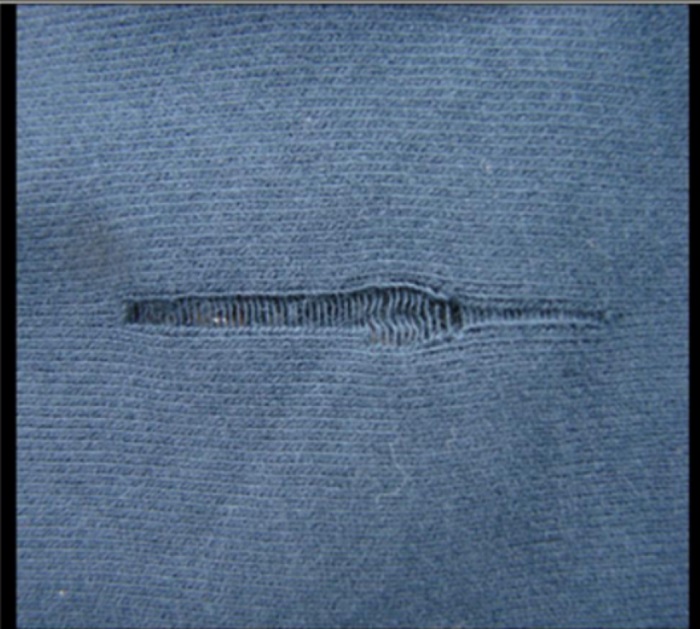
The European standard is similar, but the size of the defect is used instead of the deduction.
The perception of scoring standards in Europe, the United States and China is very different: for example, China requires the GB18401 mandatory standard or some certifications, for example, testing agencies must pass CMA certification. However, SGS and ITS have not been CMA certified before entering China, but it does not affect their international influence. China values certifications and standards, while Europe and the United States value the recognition of historical customers.
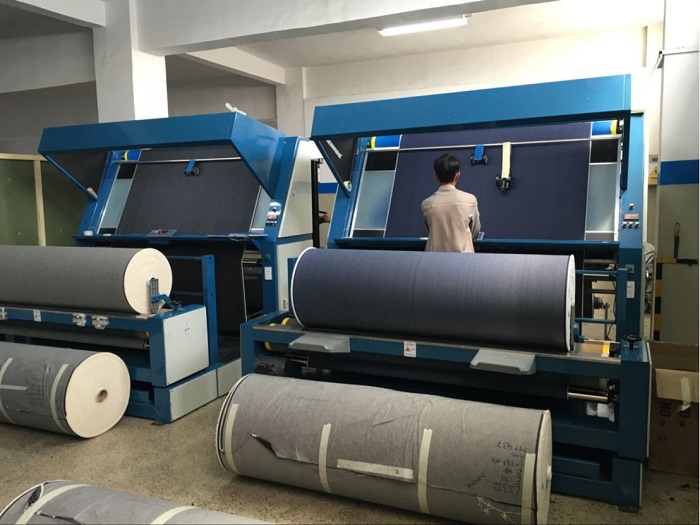
Customer satisfaction is the best fabric inspection standard. In the same way, the quality of fabric inspection machines and other equipment is also judged on the basis of customer reputation. At present, Suntech fabric inspection machine and fabric inspection packaging line has more than 4,500 customers and 10,000 machine installation cases around the world. It has a high reputation. The fabric inspection machine uses well-known brand components and 4MM A3 steel material. The fabric inspection packaging line includes fabric inspection And packaging production process, greatly improve production efficiency, welcome to inquire in detail.
